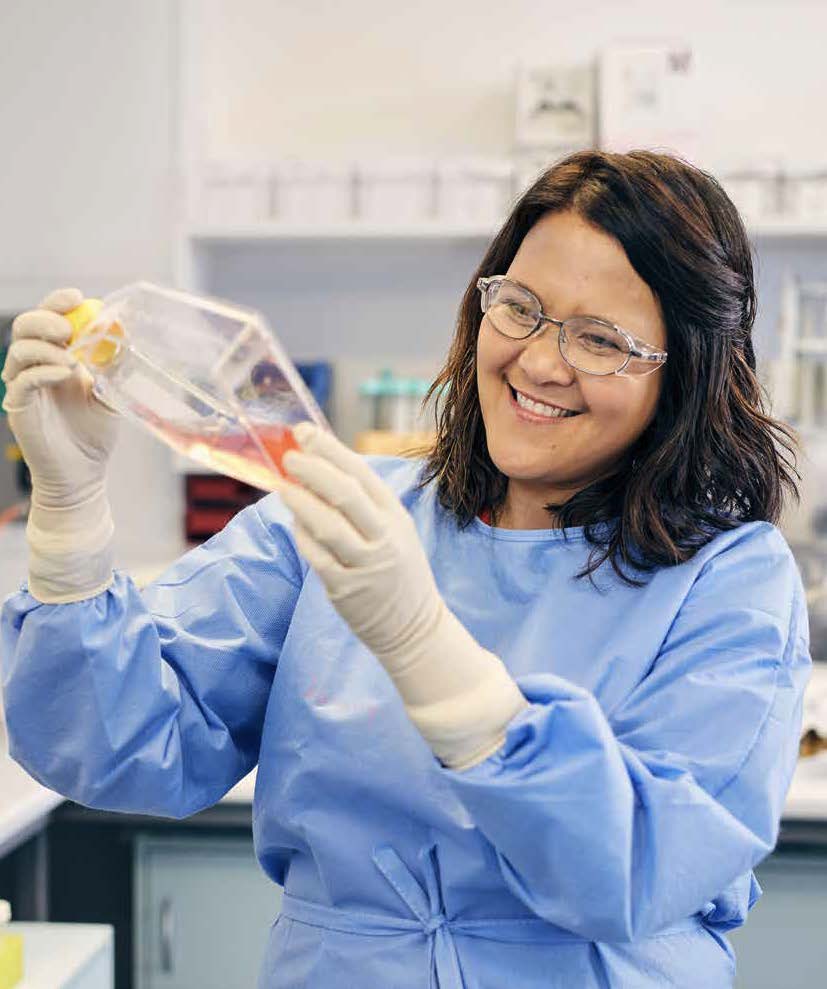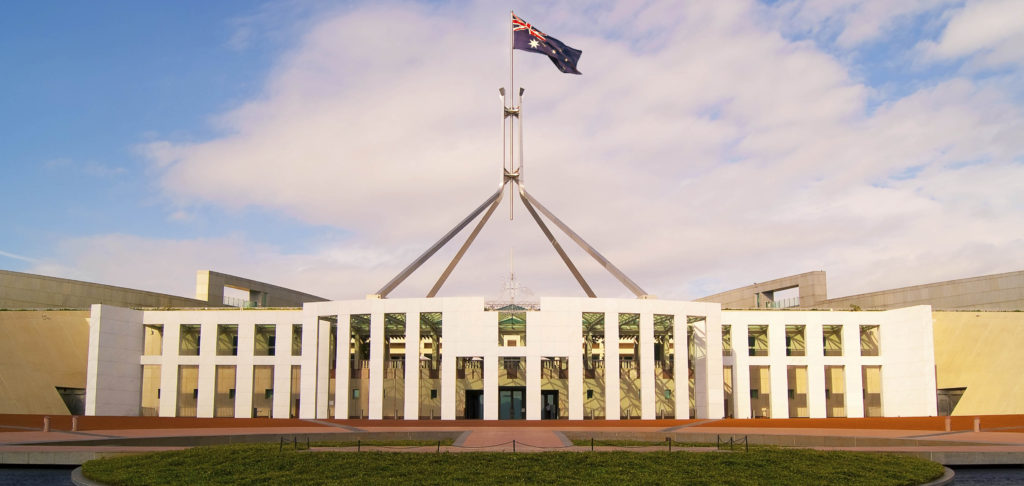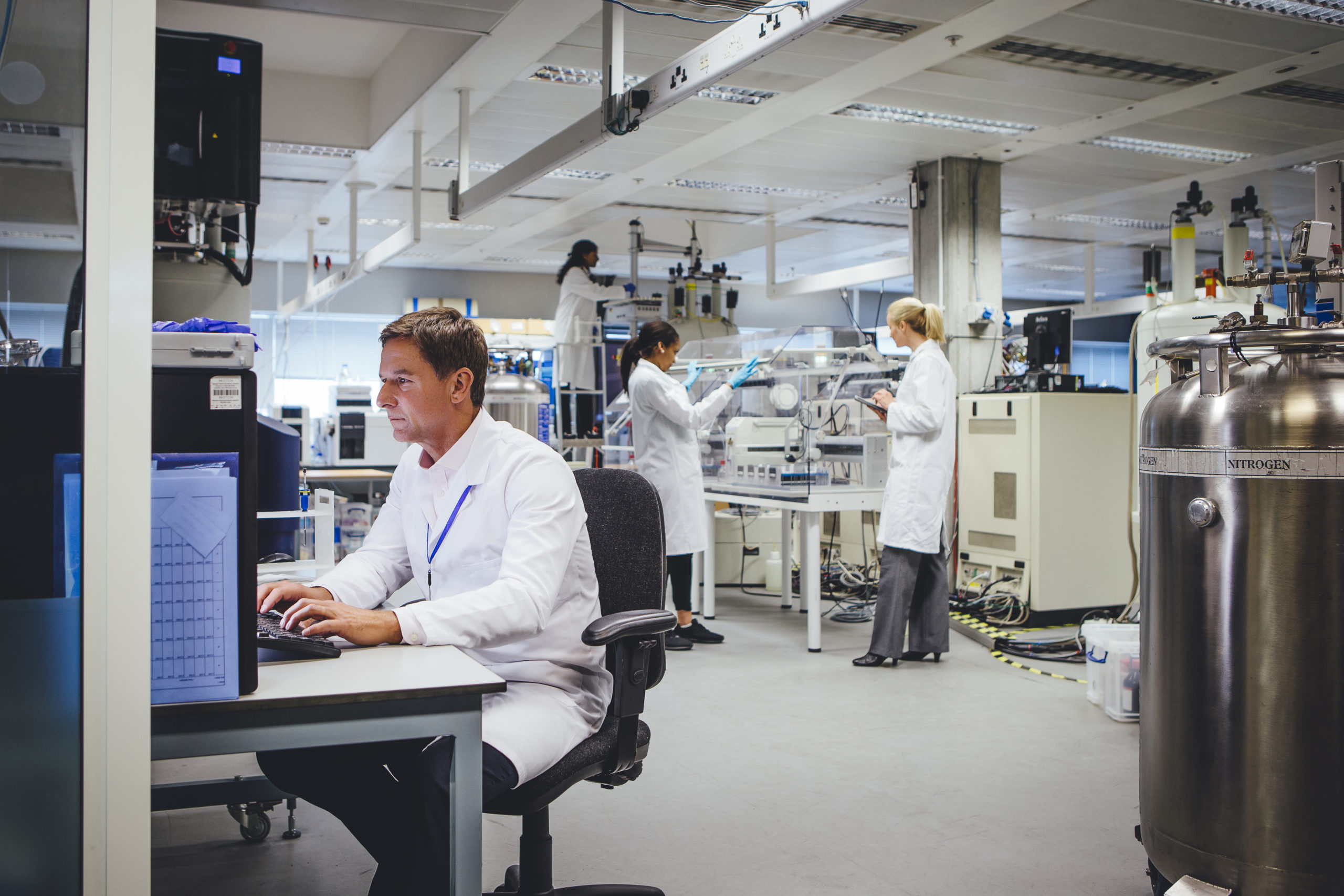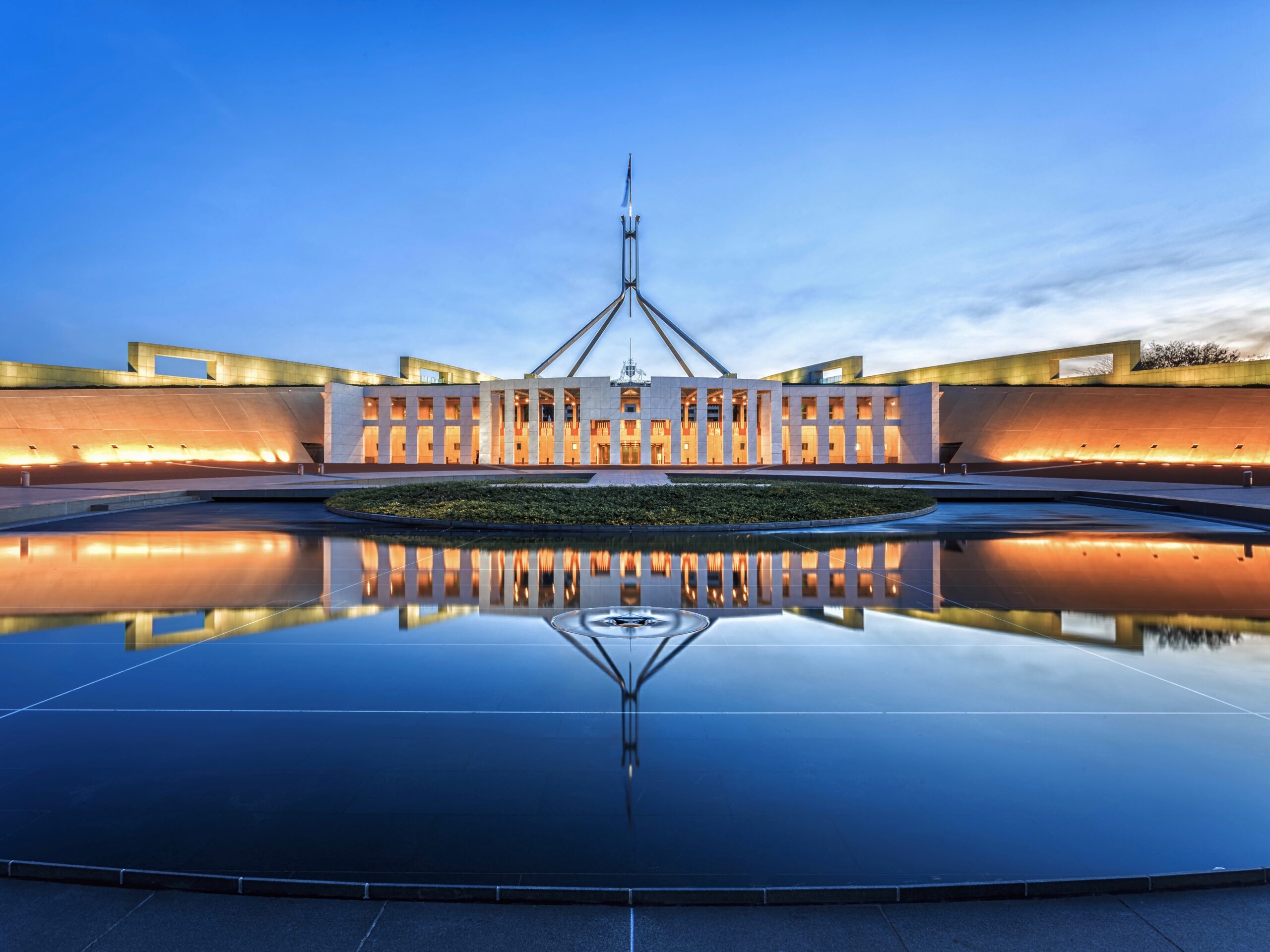Research Australia participated in consultations for the MRFF Australian Medical Research and Innovation Priorities and the MRFF Act Review. We were invited to a round table hosted by AMRAB, and provided a written submission. We recognised many positive enhancements have been suggested in the draft priorities for 2022-24. Our main concern was the lack of cohesion that links all the priorities to drive transformation across the entire health and medical research and innovation ecosystem.
Policy Update August 2024
This Policy Update covers developments since the May Budget.
National Science Statement and new National Science Priorities
The much-awaited new National Science Priorities were released on Monday 12 August, and were accompanied by a Science Statement. They are available from the Department of Industry Science and Resources website.
The Science Statement has a strong emphasis on the role science can play in supporting and creating industry, with a strong focus on economic prosperity. This is to be achieved through missions, multidisciplinary research and breaking down siloes, guided by 5 imperatives:
-
- Australian scientists, science institutions, and infrastructure shaping Australia’s science future
- Science at the centre of Australian industry
- A diverse, skilled workforce to underpin the translation of science into new industries
- Embracing science to drive Australia’s regional and global interests
- A science system prepared for future challenges
The new Statement provides an opportunity to position the health, disability and aged care sectors as an ‘industry’ that is vital to Australia’s future success and prosperity, as a means of aligning health and medical research more closely with the Statement.
The Statement also focuses on encouraging people to undertake STEM careers but there is little on supporting the existing research workforce. A lot about missions, multidisciplinary research and breaking down siloes.
Five national Science Priorities have also been identified:
-
- Transitioning to a net zero future
- Supporting healthy and thriving communities
- Elevating Aboriginal and Torres Strait Islander knowledge systems
- Protecting and restoring Australia’s environment
- Building a secure and resilient nation
Supporting healthy and thriving communities is a very broad priority, embracing social and environmental determinants, and building health literacy. It includes disability and ageing, as well as health and medicine more generally.
Modernising Human Tissue laws
On Thursday 14 August, the Attorney General, the Hon. Mark Dreyfus and Assistant Health Minister the Hon. Ged Kearney MP announced an inquiry by the Australian Law Reform Commission into Australian tissue donation laws. Largely the responsibility of the State and territories, the review will consider whether legislative reform is required to harmonise laws across the nation. The inquiry will include consideration of donation of tissue for scientific purposes. Further information on the Inquiry is expected to be provided on the ALRC’s website in coming weeks.
Australian Centre for Disease Control
While the interim Australian CDC has been operating within the Department of Health the Department has advised a new timeline for its development, to enable recommendations from the report of the COVID-19 Inquiry, due at the end of September, to be incorporated into the design, followed by further consultation. The establishment of the Australian CDC will be subject to the passage of legislation; the lack of funding for the CDC in this Budget indicates the Government does not expect it to start in this financial year.
Australia’s Economic Accelerator
Only available to universities and funded through the Education portfolio, the AEA is set to provide funding of $270 million over 2024/25, through two separate programs:
| Round 1 | Round 2 | |
| AEA Ignite
Proof of Concept (TRL2.3.4) Max. $500,000 for 12 months |
$60 m. open now | $30m. open Nov.24 |
| AEA Innovate
Proof of Scale (TRL 5,6,7) Max. $5m. for up to 2 years |
$120m. open now | $60 m. early 2025 |
For AEA Ignite an industry partner is recommended and it is mandatory for AEA innovate.
The programs must fit within the Government’s seven Priority areas for investment:
-
- Value-add in Resources
- Agriculture, forestry & fisheries
- Medical Science
- Renewables & low emission tech
- Defence Capability
- Transport
- Enabling capabilities
In addition to being in one of these priority areas, The AEA Advisory Board for the Australia’s Economic Accelerator has set the investment plan for the AEA for 2024/25. As a result, any proposal must also fit one of the six focus areas selected by the Board:
-
- Critical and strategic minerals processing
- Sustainable fuels
- Digital agriculture
- Quantum
- Artificial intelligence
- Advanced manufacturing
The most likely ‘fits’ within the focus areas for medical science are going to be products which require advanced manufacturing or utilise AI.
The focus area may change when the AEA Advisory Board sets its new investment plan for 2025/26. More information is available here.
National HMR Strategy
The National HMR Strategy now has its own webpage.
‘The strategy will:
-
- cover the entire sector and include all levels of government, industry, philanthropy, academia and consumers
-
- strengthen and leverage Australia’s world-leading research capability.’
Several current activities have been brought under the umbrella of the National Health and Medical Research Strategy, including:
-
- The MRFF/MREA alignment
- The National One Stop Shop; and
- The health and medical research workforce audit
MRFF/MREA Alignment
The MRFF/MREA alignment is proceeding in two stages, with legislative change required to fully implement a merged administration of the MRFF and MREA, with both funds managed by the NHMRC. ‘In the interim, the NHMRC and the department are working together to address key concerns and issues while we consider options for implementation. This includes working together to better use existing advisory committees (eg MRFF will seek advice from NHMRC committees), developing and implementing policies together, and other efforts that better align the two funds without requiring formal governance reforms.’ [Consultation Summary Report, Next Steps.]
Strategic Examination of R&D
Announced on Budget night, the new strategic examination of Australia’s R&D system is intended ‘to determine how we can get more value from every taxpayer dollar invested in research, maximise the contribution of science and R&D to the broader economy and maintain our competitive edge.’ Led by the Science and Industry Minister, it is nonetheless be a whole of government review.
A secretariat has been set up within the Department of Industry Science and Resources, and Dom English has moved from the Department of Education to lead the Secretariat. Consultation on the terms of reference and the members of the independent panel has been undertaken but the results are not yet public.
With health and medical research representing 26% of all Australian R&D, Research Australia will continue to champion a focus on health and medical research as part of this review.
National Reconstruction Fund
Fulfilling an election promise, the legislation to create the National Reconstruction Fund (NRF) was passed in early 2023.
The NRF was initially scheduled to invest $15.0 billion over 7 years from 2023–24 to provide targeted co-investments in seven priority areas: resources; agriculture, forestry and fisheries sectors; transport; medical science; renewables and low emission technologies; defence capability; and enabling capabilities. It can provide debt, equity or guarantees, but does not provide grants. The NRFC’s first corporate plan is available here. With time running out to make initial investments in this financial year, the plan commits the NRF to making its first investments before the end of 2024. No investments have been publicly disclosed to date.
HTA Review
The Health Technology Assessment (HTA) Policy and Methods Review concluded on 4 May 2024. The HTA Review Reference Committee which was responsible for overseeing the HTA Review, held its final meeting on 2 May 2024 and its final report has been provided to the Minister for Health and Aged Care.
The Minister has yet to make the Review Report, or any response to the report, public.
Recent Submissions
Good Institutional Practice Guide
In May, the NHMRC released a draft Good Institutional Practice Guide, which seeks to provide guidance to NHMRC-funded institutions and NHMRC-funded researchers about good institutional practice ‘to promote open, honest, supportive and respectful institutional cultures conducive to the conduct of high-quality research’. Its development has been overseen by NHMRC’s Research Quality Steering Committee.
Research Australia made a submission to the NHMRC, directed to the CEO Professor Steve Wesselingh. While welcoming the Guide we indicated that awareness of practices and initiatives that can improve research culture is not the primary barrier to improving research culture; significant work has already been done to identify the issues and raise awareness. The key problem is implementing the measures needed to improve the culture.
We suggested the finalisation and publication of the Good Institutional Practice Guide will provide impetus for improvement that we can build on if we act collectively. Research Australia suggested leadership and involvement from the NHMRC will be essential, and would demonstrate the NHMRC’s ongoing commitment to improving research culture and practice. We offered to work with the NHMRC, the Research Quality Steering Committee, other peak bodies and research institutions that want to participate in a coalition to improve research practice and culture.
Allied health Workforce
In May the Department of Health and Aged Care released a consultation paper on a draft outline of the National Allied Health Workforce Strategy, intended to ensure there are enough highly trained allied health professionals distributed across the country.
Research Australia’s response to the consultation paper focussed on the need for the strategy to recognise the role of allied health professionals as clinician researchers in creating a self improving allied health sector and supporting retention of allied health professionals.
To achieve this the Strategy needs to better support clinician researchers and the submission highlighted ways to do this.
Upcoming Consultations and Submissions
Keep up to date with new consultations on the Research Australia website here.
All Research Australia’s submissions to closed consultations can be found here.
Improving Research Culture a collective responsibility
In May, the NHMRC released a draft Good Institutional Practice Guide which seeks to provide guidance to NHMRC-funded institutions and researchers about good institutional practice ‘to promote open, honest, supportive and respectful institutional cultures conducive to the conduct of high-quality research’. Its development has been overseen by NHMRC’s Research Quality Steering Committee.
Research Australia made a submission in response to the draft. While welcoming the Guide Research Australia indicated that awareness of practices and initiatives that can improve research culture is not the primary barrier to improving research culture; significant work has already been done to identify the issues and raise awareness. The key problem is implementing the measures needed to improve the culture.
Research Australia suggested the finalisation and publication of the Good Institutional Practice Guide will provide impetus for improvement that the sector can build on if we act collectively. Research Australia suggested leadership and involvement from the NHMRC will be essential, and would demonstrate the NHMRC’s ongoing commitment to improving research culture and practice. We offered to work with the NHMRC, the Research Quality Steering Committee, other peak bodies and research institutions that want to participate in a coalition to improve research practice and culture.
Research Australia’s submission is available here.
RESEARCH AUSTRALIA WELCOMES MEDICAL RESEARCH COMMITMENT
Media Release 1 May 2024
RESEARCH AUSTRALIA WELCOMES MEDICAL RESEARCH COMMITMENT
The Albanese Government’s commitment to medical research today is a critical step towards underwriting the health and economic outcomes that Australians want and deserve.
Research Australia CEO Nadia Levin today welcomed the announcement, and in particular the National Strategy for Health and Medical Research which the organisation has long called for.
“Medical research is the path to a healthy Australian population and a healthy Australian economy, and today’s commitment is a critical step,” Ms Levin said.
“Health and medical research represents 23 per cent of Australian R&D activity and it needs and deserves a coordinated strategy to focus and target it.
“A strategic, national approach will guide discoveries faster to market and to the Australians who want the best possible health care – all imperative for a healthy, wealthy future.
“We look forward to working with Minister Butler to progress the National Health and Medical Research Strategy.”
Ms Levin said that the next step the Australian Government could take would be to fully utilise the funds available from the Medical Research Future Fund.
“As Australia’s peak health and medical research body, we’re pleased to see the Medical Research Future Fund supporting new missions in low survival cancers and a focus on reducing health inequities,” she said.
“The next thing the Government could do is ensure all of the available MRFF funding is flowing through to researchers.”
The Future Fund Board of Guardians determined $973 million was available for grants through the Medical Research Future Fund (MRFF) for the 2024-25 financial year, however the Federal Government has so far only budgeted for $650 million to be disbursed.
It follows 2023-24 when $870 million was available but funding actual funding was still capped at $650 million.
“The health and medical research sector has abundant capacity to immediately use every available dollar of research funding, with worthy projects and medical advances ready to be made,” Ms Levin said.
“The more we invest in medical research the better the health, policy and economic outcomes for Australia in the years to come.”
As the peak national body for health and medical research and innovation, Research Australia played a key role in the establishment of the MRFF.
Media contact: Jack Douglas 0450 115 005
Download the Media Release here.
Research in perimenopause and menopause
Research Australia welcomes the report of the Senate Inquiry into Menopause and perimenopause, tabled 18 September. Our submission was referenced a number of times in the Inquiry’s report, where a number of our concerns and recommendations were specifically highlighted throughout the report and in the recommendations. These include the need for better understanding of the diversity of symptoms which impact women’s lives differently; the lack of robust data; the diverse experiences of different groups within Australia (such as First Nations women or women from culturally and linguistically diverse backgrounds), and experiences of intersectional discrimination.
The report also acknowledged the need for a strategic approach to menopause research to guide the ‘prevention, diagnosis and effective treatment of the symptoms of menopause and perimenopause and provide appropriate support’, which needs appropriate funding investment. We acknowledge the contributions made to the submission by our members, particularly, Professor Debra Anderson UTS and Dr Yvonne Middlewick, Curtin ECU.
Research Australia continues to be committed to advocating for women’s health research. Earlier this year we released a survey to members, and during the next few months we are looking forward to undertaking further consultations with members to inform this work.
——
Research Australia has responded to the Senate Inquiry into issues related to perimenopause and menopause.
Our submission identifies areas in which further research into perimenopause and menopause is required; and where research is needed to improve the understanding of existing evidence on menopause and perimenopause among the medical community, individuals, employers and disadvantaged populations.
Our current knowledge of the symptoms of perimenopause and menopause and their prevalence and impact in the Australian community and economy is patchy. This lack of evidence is impairing the response to perimenopause and menopause in Australia. We recommend a more strategic approach to the funding of research into menopause and perimenopause in Australia to address these gaps.
Research Australia’s submission is available here.
Pre Budget Submission calls for greater investment in health and medical research and innovation
Research Australia’s Pre Budget submission to the Treasurer ahead of the 2024 Budget has made the case for increased investment in Australian health and medical research and innovation to support a healthier and more prosperous Australia.
The Australian Government’s investment in R&D is below the OECD average.
There is an additional $323 million approved for release from the MRFF in 2024-25 that the Government is not investing in medical research and innovation.
The Universities Accord process provides the ideal opportunity to increase the investment in the NHMRC, ARC and indirect research costs.
We have advocated for a greater role for the Australian Centre for Disease Control, for the greater use of Government procurement to support Australian innovation, and for the full development of the National HMR strategy and workforce strategy.
Read Research Australia’s submission here.
The future of National Digital Research Infrastructure
As part of development of the new NCRIS Investment Plan, the Department of Education is developing a National Digital Research Infrastructure Strategy.
The Strategy aims to provide a vision and strategic direction to steer the National Collaborative Research Infrastructure Strategy (NCRIS) response to major challenges facing Australia’s NDRI system and guide Government investment and decision making.
Research Australia’s submission to the Consultation has proposed a definition of ‘digital research infrastructure’ and a vision that better reflects the expected outcomes if the Strategy is successful. We also emphasised the need to consider and prepare for the increasing complexity of data as well as increased volumes of data.
Research Australia’s submission is available here.
Budget 2023 Update
Summary
Treasurer Jim Chalmers’ mini Budget in October last year implemented some of the new Government’s election promises and cut some former Government’s programs. Tonight, the Government has delivered its first full Budget, setting the agenda and responding to the ongoing pressures of high inflation, a Medicare system in need of reform, a housing crisis and the need to decarbonise and diversify our economy.
The surprise Budget surplus for this year has been delivered, in part, by higher than expected commodity prices. Commodity prices are expected to fall in the future, and the Government has committed to diversifying our economy with more high value advanced manufacturing, including medical products. While some progress is made in this Budget, there is still more that can and must be done.
The rising cost of living has continued to be a key political issue. In the March 2022 Budget, the CPI was forecast to be 3.0% for 2022-23. The Budget tonight expects inflation to have peaked, at around 7% p.a. and to fall to 3.25% over 2023-24. Inflation increases the cost of undertaking health and medical research and innovation. Government funding for research has failed to keep pace with inflation over successive Budgets. This Budget delivers some relief with real increases in funding for ARC programs, while the NHMRC’s MREA is forecast to keep up with inflation.
Please read on for our summary of what this Budget means for health and medical research and innovation.
Health Portfolio
Improved digital health systems
The Budget includes a $951.2 million over 4 years investment in digital health technologies to build a more efficient, connected and collaborative healthcare system. This includes:
-
- $325.7 million, to make the Australian Digital Health Agency an ongoing entity, so that it can continue to deliver important digital health infrastructure, including upgrading My Health Record. Only one in 10 medical specialists currently use My Health Record and only one in five diagnostic imaging reports are uploaded. We continue to await further information on a Framework for secondary use of My Health Record data for research purposes.
- $429 million to ensure that My Health Record is easier to use, is compatible with the information and billing systems that health practitioners are already using, and connects the health system so that patients can access and securely share their health data.
- $126 Million to renew the Intergovernmental Agreement on National Digital Health for 4 years to progress the secure, safe and efficient sharing of information across the health system.
Australia’s first National Clinical Quality Registry Program receives $40 million over 4 years. Nominated areas are dementia, cystic fibrosis, and pelvic floor disorders. This is good news, reversing several years of delays; registries are a vital bridge between healthcare and research.
Australian Centre for Disease Control (ACDC)
The Government is fulfilling its election promise to create the ACDC, backing up the $3.2 million allocated in the October Budget for preparatory work with $91.1 million to establish an ‘interim’ Australian Centre for Disease Control in the Department of Health and Aged Care and replenish the National Medical Stockpile.
Other announcements include
- $260m invested in a new national lung cancer screening program, with at risk Australians able to get a lung scan every two years, as recommended by the independent Medical Services Advisory Committee.
- The Therapeutic Goods Administration (TGA) will receive $61 million over 4 years for a range of activities aimed at protecting public health) including continued assistance to small and medium enterprises particularly those developing emerging technologies.
- $26.3 million over 4 years to support equity in the healthcare system and improve the health of Australian women and girls), including through the Australian Longitudinal Study on Women’s Health and Australian Institute of Health and Welfare National Maternity Data development project.
- $900,000 to develop a 10 Year National Action Plan for the Health and Wellbeing of LGBTIQA+ people, and to establish an LGBTIQA+ Health Advisory Group.
Consistent with Research Australia’s sustained advocacy on this issue, this Budget sees the Government’s funding to the NHMRC’s Medical Research Endowment Account appear to just keep up with projected inflation, but with an unexplained decline in funding in the last year of the forward estimates. The MRFF funding meanwhile is static at $650 million per annum, meaning it fails to keep up with inflation and is declining in real terms.
Medical Research Future Fund
The funding available from the MRFF each year is dependent on the investment return on its capital. For 2023-24 the Future Fund Board of Guardians has determined the amount available for grants of financial assistance is $870 million. [1] Despite this, only $650 million has been made available as funding in 2023-24. And this is despite an underspend in 2022-23 of more than $50 million.
| $m. | 22-23 | 23-24 | 24-25 | 25-26 | 26-27 |
| Funding from MRFF 2023 Budget | 598.0 | 650.0 | 650.0 | 650.0 | 650.0 |
| Funding from MRFF 2022 Budget (OCT) | 650.0 | 650.0 | 650.0 | 650.0 | |
| Funding from MRFF 2022 Budget (MAR) | 650.0 | 650.0 | 650.0 | 650.0 |
There are programs that could be extended or expanded immediately, including support for early and mid career researchers and continuation of the highly regarded REDI program. Other programs could be established or piloted relatively easily, including the Clinical Research Fellowships proposed previously by Research Australia.
We will be working with the Government to understand why funding to the MRFF hasn’t been increased in 2023-24 even though more funding is available and what the intentions are for future years.
NHMRC Programs
Funding for the NHMRC’s Medical Research Endowment Account has increased slightly since the October Budget, to $910 million in 2023-24. An increase of around 3.6% over 2022-23, this is about equivalent to forecast inflation. There are similar annual increases in the next two financial years, before a drop of around $12 million in 2026-27. There is no explanation at this stage for the forecast decline. Overall, the MREA is set to at least keep pace with expected inflation over the next few years, an improvement on years of real declines in funding.
| $m. | 22-23 | 23-24 | 24-25 | 25-26 | 26-27 |
| Funding to MREA 2023 Budget | 877.952 | 910.652 | 940.330 | 962.039 | 949.747 |
| Funding to MREA 2022 Budget (OCT) | 877.952 | 905.160 | 922.365 | 938.095 | |
| Funding to MREA 2022 Budget (MAR) | 877.952 | 891.094 | 905.355 | 918.985 |
Revamping Primary Care
This Budget responds to the recommendations of the Strengthening Medicare Taskforce, delivering $6.1 billion to strengthen Medicare through:
-
- A $3.5 billion investment to triple bulk billing incentives, for free GP consultations for 11.6 million children under 16, pensioners and other Commonwealth concession card holders; and
- A $1.5 billion indexation boost to Medicare rebates –the biggest increase in 30 years.
Additionally, more than 300 medicines will be cheaper for 6 million Australians who will be able to buy 2 months’ worth of medicine with a single prescription. Fewer visits to the GP and pharmacy will save patients an estimated $1.6 billion.
MyMedicare ($19.7 million over 4 years) will build a stronger relationship between patients and their primary care teams. It is voluntary and open to anyone, with patients able to register with their preferred practice, GP and care team. MyMedicare will also support access to longer telehealth consultations ($5.9 million over 4 years).
It is interesting to see focused funding for cutting-edge patient clinical services will be funded through Medicare ($118.2 million over 5 years) including:
-
- genetic testing for childhood hearing loss
- genetic testing for haematological malignancies
- profiling tests to determine a patient’s risk of recurrent breast cancer
- testing for the diagnosis of mitochondrial disease.
While the Research Australia welcomes the major changes this will make to the delivery of primary care in Australia for the next decade and beyond, there has been no commitment to fund research to guide the design and implementation of these measures, or to support their evaluation. Measures to boost the primary care workforce similarly, do not include support for researchers to generate the evidence for improved primary care.
Education Portfolio
Nearly half of all Australian health and medical research is undertaken in the higher education sector, and the Department of Education makes a significant contribution to the funding of this research through several programs, as outlined below.
ARC Programs
The Australian Research Council’s Funding Programs are critical to Australian publicly funded research, including to the life sciences and medical technologies.
Discovery Program
Over the forward estimates in this Budget, funding to the ARC for the Discovery Program increases by 8% in 2023-24 compared to this year, and by an average of 8% per annum in 2024-25 and 4% in 2025-26 and by 3%% in 2026-27. This means the Discovery Program is forecast to increase slightly in real terms (i.e. at a rate higher than inflation).
| $m. | 22-23 | 23-24 | 24-25 | 25-26 | 26-27 |
| 2023 Budget | 511.074 | 552.390 | 599.499 | 629.581 | 646.895 |
| 2022 Budget (OCT) | 511.074 | 551.867 | 596.388 | 622.986 | |
| 2022 Budget (MAR) | 511.074 | 535.915 | 562.406 | 585.206 |
Linkage Program
| $m. | 22-23 | 23-24 | 24-25 | 25-26 | 26-27 |
| 2023 Budget | 317.251 | 343.808 | 373.989 | 402.784 | 430.918 |
| 2022 Budget (OCT) | 319.503 | 345.731 | 374.289 | 400.792 | |
| 2022 Budget (MAR) | 340.820 | 357.704 | 375.595 | 390.950 | |
| 2021 Budget | 329.948 | 334.109 | 339.622 | ||
| 2020 Budget | 325.240 | 327.074 | N/A | ||
| 2019 Budget | 301.741 | N/A | N/A |
The ARC Linkage Program has been charged with delivering the Industry Fellows component of the University Research Commercialisation Scheme. Accordingly there is a boost to the Linkage Program’s funding in the next financial year of around $26 million compared to 2022-23, and annual increases in subsequent years of 8% to 9% per annum. This means that like the Discovery Program, the Linkage Program is forecast to increase in real terms (i.e. at a rate higher than inflation).
Research Support
In addition to providing funding for the ARC research programs, the Department of Education provides funding to universities to help cover the indirect costs of research.
In the 2020 Budget, the Government used the Research Support Program to provide a vital one off injection of $1 billion into higher education research in that financial year, with funding in subsequent years reverting to normal’. The 2023-24 Budget provides increases of around 5% per annum in the Research Support Program from 2023-24, meaning that funding for this program also increases slightly in real terms if inflation is as predicted.
Research Support Program
| $m. | 22-23 | 23-24 | 24-25 | 25-26 | 26-27 |
| 2023 Budget | 951.188 | 1005.282 | 1064.389 | 1101.524 | 1131.792 |
| 2022 Budget (OCT) | 951.188 | 1004.314 | 1058.779 | 1089.934 | |
| 2022 Budget (MAR) | 951.188 | 978.674 | 1,002.668 | 1,028.230 |
Funding for the indirect costs of research funded by the MRFF is provided from the Research Support Program. With the MRFF providing hundreds of millions of dollars in funding to universities, a substantial increase in the Research Support Program is needed just to maintain the levels of research support funding for research projects at their current already inadequate level. The issue of indirect research costs remains unresolved for the whole health and medical research sector and indeed publicly funded research more broadly. Research Australia continues to call for a whole of government approach to the issue of funding indirect research costs.
Research Training
The Research Training Program (RTP) provides funding to universities to support higher degree by research students (mostly PhDs). Funding for the RTP declined in absolute terms between the 2019 and 2020 Budgets, and only partly recovered in the 2022 Budget. Consistent with the October Budget, the latest Budget provides increases of around 6% per year in 2023-24 and 2024-24, before the annual increase drops to around 3%. Inexplicably, funding actually declines slightly in 2026-27, to $1.26 billion.
| $m. | 22-23 | 23-24 | 24-25 | 25-26 | 26-27 |
| 2023 Budget | 1092.766 | 1154.911 | 1222.827 | 1264.691 | 1260.070 |
| 2022 Budget (OCT) | 1092.766 | 1153.800 | 1216.372 | 1251.497 | |
| 2022 Budget (MAR) | 1092.766 | 1124.344 | 1151.909 | 1181.153 |
Australia’s Economic Accelerator
The Australia’s Economic Accelerator was announced in the March 2022 Budget, but the legislation was only passed earlier this year. This is a $1.6 billion program over 10 years, administered by the Department of Education to overcome the valley of death that currently exists between the point at which public research funding ceases (typically publication) and the point at which commercial investors are prepared to get involved. Unlike ARC programs, the Accelerator is open to application for medical products. The funding for the program reflects the delayed start in 2022-23 with higher funding over the forward estimates in subsequent years.
| $m. | 22-23 | 23-24 | 24-25 | 25-26 | 26-27 |
| 2023 Budget | 10.172 | 99.536 | 163.247 | 161.646 | 212.089 |
| 2022 Budget (OCT) | 10.172 | 99.444 | 162.395 | 159.95 | |
| 2022 Budget (MAR) | 49.160 | 99.444 | 149.498 | 154.601 |
National Collaborative Research Infrastructure (NCRIS) Program
The NCRIS Program funds vital national research infrastructure needed to support Australian research. The most recent National Research Infrastructure Roadmap nominated synthetic biology, digital research infrastructure, collections (biobanks) and facilities to scale up materials for clinical trials.
This Budget maintains the forecast annual boost to NCRIS of more than $100 million from 2023-24. The new Research Infrastructure Investment Plan should provide more detail about how this funding will be allocated once it is completed; hopefully it will be announced soon.
| $m. | 22-23 | 23-24 | 24-25 | 25-26 | 26-27 |
| 2023 Budget | 286.043 | 402.290 | 503.116 | 462.850 | 372.323 |
| 2022 Budget (OCT) | 286.043 | 400.028 | 499.848 | 458.338 | |
| 2022 Budget (MAR) | 286.043 | 396.826 | 496.739 | 454.441 |
Industry, Innovation and Science Portfolio
National Reconstruction Fund
Fulfilling another election promise, the Government earlier this year passed legislation to create the National Reconstruction Fund (NRF). The NRF will invest $15.0 billion over 7 years from 2023–24 to provide targeted co-investments in seven priority areas: resources; agriculture, forestry and fisheries sectors; transport; medical science; renewables and low emission technologies; defence capability; and enabling capabilities.
The NRF is expected to generate revenue from investments, with estimated receipts of $188.7 million over the forward estimates from the $15 billion of investments in loans, equity investments and guarantees. The returns will be reinvested to ensure the NRF’s sustainability.
CRC Program
The Cooperative Research Centre (CRC) Program is important to health and medical research and innovation, with many of the CRCs funded over the 30 year life of the program being health related. Current CRCs include the Digital Health CRC and the Autism CRC.
The smaller CRC projects program is also relevant, with recently funded projects including the creation of better brain electrodes and development of a bionic medical device that delivers high-fidelity visual-spatial perception for blind people. Funding for the CRC Program is scheduled to increase slightly faster than forecast in the March 2022 and October Budgets, but not quite enough to keeping up with projected inflation.
| $m. | 22-23 | 23-24 | 24-25 | 25-26 | 26-27 |
| 2023 Budget | 199.374 | 200.532 | 208.046 | 205.199 | 209.737 |
| 2022 Budget (OCT) | 199.374 | 199.962 | 205.054 | 201.579 | |
| 2022 Budget (MAR) | 199.374 | 193.117 | 197.070 | 193.540 | |
| 2021 Budget | 197.815 | 191.042 | 193.807 | N/A |
CSIRO
The CSIRO has Flagship Programs relevant to health and medical research and is a key collaborator and partner in research. While it generates much of its own revenue it is also funded by the Government. The Government contribution to the CSIRO outlined in the Budget rises in the next two financial years before dropping back again. There are slight increases on the funding outlined in the October Budget.
| $m. | 21-22 | 22-23 | 23-24 | 24-25 | 25-26 | 26-27 |
| 2023 Budget | 991.134 | 1,008.739 | 934.391 | 945.155 | 948.486 | |
| 2022 Budget (OCT) | 949.037 | 991.134 | 1.005.563 | 919.405 | 931.573 | |
| 2022 Budget (MAR) | 949.037 | 991.289 | 985.625 | 899.352 | 904.477 |
New beamlines for Synchrotron
ANSTO’s Australian Synchrotron continues its partner-funded $98 million BR-GHT beamline expansion program, with eight new beamlines being constructed. This will nearly double the Synchrotron’s capacity and allow for broader engagement with researchers and industry in a range of applications, from high-tech manufacturing, including aerospace and transport, to health, including drug development and medical implants.
Entrepreneurs’ Program makes way for Industry Growth Program
The Entrepreneurs’ Program is a long standing funding program to support the commercialisation and development of new innovations. This Budget signals the end of the program, with a slow decline over several years, presumably as existing commitments are concluded.
| $m. | 22-23 | 23-24 | 24-25 | 25-26 | 26-27 |
| 2023 Budget | 126.900 | 53.384 | 9.208 | 2.298 | 3.008 |
The Entrepreneurs’ program is being replaced with a new $397 million Industry Growth Program, providing grants of between $50,000 and $5 million to startups. It is focused on the same target areas as the National Reconstruction Fund (NRF), including medical products, and is designed to support new businesses to the point where they are eligible for investment from the NRF.
Conclusion
Research Australia will continue to provide analysis and commentary in the coming days and weeks. We invite your responses and reactions to how the 2023 Budget affects you and your work.
You can share your views with us at our 30-minute budget analysis as part of our NEW – Member Event Series. We will provide a snapshot of Federal budget changes that affect the funding environment for Australian health and medical research and innovation.
When: Thursday 11 May 2023
Time: 12 midday – 12.30pm (AEST)
Platform: Zoom (details to be supplied after registration.)
If you have not yet registered, please click here.
Please contact Greg Mullins, Head of Policy, greg.mullins@researchaustralia.org
Ends …..
[1] Australian Government Future Fund, Determination pursuant to section 34(1) of the MRFF Act 2015 Maximum annual distribution for financial year 2023-24, obtained under FOI
Doubling Philanthropy by 2030
The Commonwealth Government has set an ambitious target to double philanthropic giving by 2023 and has asked the Productivity Commission (PC) to advise on how this can be achieved. The PC has launched an Inquiry, and in this first phase it is seeking data on philanthropy and ideas on actions the Government can take to achieve this goal.
Philanthropy plays a critical role in funding health and medical research and innovation in Australia. Research Australia’s submission has provided information about the nature of philanthropy in our sector and the role it plays in complementing other sources of funding. We have drawn on our many years of annual opinion polling to provide information about motivations for donating to research, tax deductions, trends in donations and attitudes to charities partnering with government to jointly fund research.
We have suggested that a more strategic approach by the Australian Government to working with charities could lead to efficiencies and greater effectiveness in the funding of HMR.
Research Australia’s submission is available here.
We will also respond to the second stage of the PC’s Inquiry, later in 2023. If you would like to join our working group on philanthropy, please email Greg Mullins, Head of Policy, at greg.mullins@researchaustralia.org
Research is central to the Universities Accord
Research Australia’s submission to the Universities Accord Discussion paper responds to two key issues. The first relates to the career prospects and professional development of early and mid-career researchers. Research Australia proposes that this be a shared responsibility of research funders, universities, researcher managers and researchers. We also welcome further consideration of programs to support exposure to roles in industry and government during the completion of a higher degree by research.
The second relates to the funding for indirect research costs. We propose a new structure for the future funding of direct and indirect research costs and two distinct principles to guide the structure. We also propose that funding for national research infrastructure be included in these deliberations.
In each proposal we outline the case for how and why these issues should be addressed by an Accord between universities and the Commonwealth Government.
Research Australia’s submission is available here.









